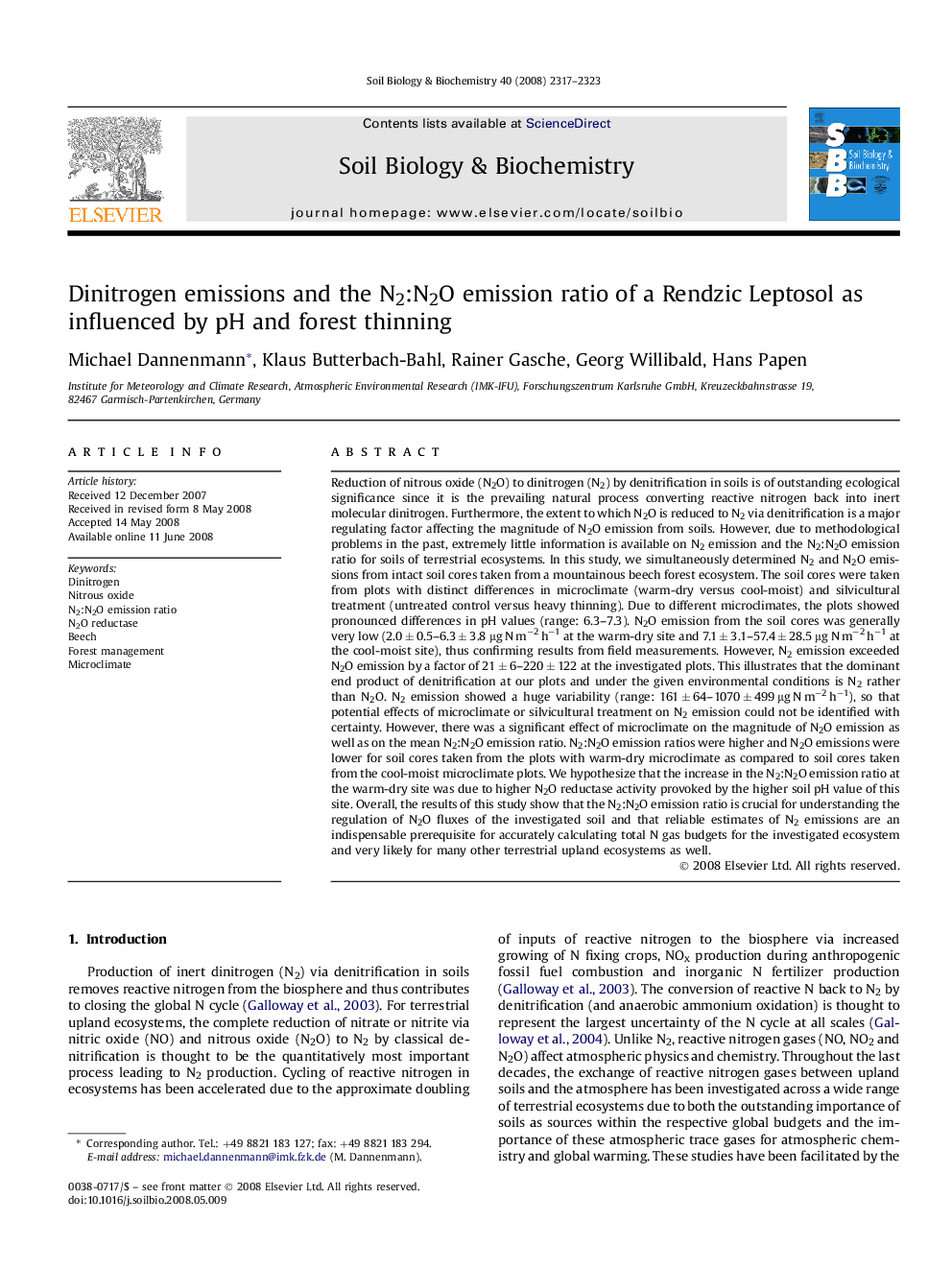| کد مقاله | کد نشریه | سال انتشار | مقاله انگلیسی | نسخه تمام متن |
|---|---|---|---|---|
| 2026893 | 1070054 | 2008 | 7 صفحه PDF | دانلود رایگان |

Reduction of nitrous oxide (N2O) to dinitrogen (N2) by denitrification in soils is of outstanding ecological significance since it is the prevailing natural process converting reactive nitrogen back into inert molecular dinitrogen. Furthermore, the extent to which N2O is reduced to N2 via denitrification is a major regulating factor affecting the magnitude of N2O emission from soils. However, due to methodological problems in the past, extremely little information is available on N2 emission and the N2:N2O emission ratio for soils of terrestrial ecosystems. In this study, we simultaneously determined N2 and N2O emissions from intact soil cores taken from a mountainous beech forest ecosystem. The soil cores were taken from plots with distinct differences in microclimate (warm-dry versus cool-moist) and silvicultural treatment (untreated control versus heavy thinning). Due to different microclimates, the plots showed pronounced differences in pH values (range: 6.3–7.3). N2O emission from the soil cores was generally very low (2.0 ± 0.5–6.3 ± 3.8 μg N m−2 h−1 at the warm-dry site and 7.1 ± 3.1–57.4 ± 28.5 μg N m−2 h−1 at the cool-moist site), thus confirming results from field measurements. However, N2 emission exceeded N2O emission by a factor of 21 ± 6–220 ± 122 at the investigated plots. This illustrates that the dominant end product of denitrification at our plots and under the given environmental conditions is N2 rather than N2O. N2 emission showed a huge variability (range: 161 ± 64–1070 ± 499 μg N m−2 h−1), so that potential effects of microclimate or silvicultural treatment on N2 emission could not be identified with certainty. However, there was a significant effect of microclimate on the magnitude of N2O emission as well as on the mean N2:N2O emission ratio. N2:N2O emission ratios were higher and N2O emissions were lower for soil cores taken from the plots with warm-dry microclimate as compared to soil cores taken from the cool-moist microclimate plots. We hypothesize that the increase in the N2:N2O emission ratio at the warm-dry site was due to higher N2O reductase activity provoked by the higher soil pH value of this site. Overall, the results of this study show that the N2:N2O emission ratio is crucial for understanding the regulation of N2O fluxes of the investigated soil and that reliable estimates of N2 emissions are an indispensable prerequisite for accurately calculating total N gas budgets for the investigated ecosystem and very likely for many other terrestrial upland ecosystems as well.
Journal: Soil Biology and Biochemistry - Volume 40, Issue 9, September 2008, Pages 2317–2323